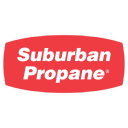Trailing Twelve Months Performance Comparison of Selected MLPs
Submitted by Ron Hiram of Wise Analysis using our Trefis Contributors tool
Distributable cash flow (“DCF”) is a quantitative standard viewed by investors, analysts and the general partners of many master limited partnerships (“MLPs”) as an indicator of the MLP’s ability to generate cash flow at a level that can sustain or support an increase in quarterly distribution rates. Since DCF is not a Generally Accepted Accounting Principles (“GAAP”) measure, its definition is not standardized. In fact, as shown in a prior article, each MLP may define DCF differently.
I use the term sustainable DCF to distinguish my definition from those used by the MLPs. Since “sustainability” is not a clearly defined term, my definition is clearly a subjective one. In that respect, it is not different. But by minimizing deviations from the GAAP term net cash from operating activities, I create a measurement tool that provides better consistency in evaluating an individual MLP’s performance. See a prior article for a review of the variety of factors causing reported DCF to differ from sustainable DCF as I calculate it. I then use sustainable DCF as a common yardstick to improve my ability to compare MLPs. Of course, it is by no means a sole yardstick.
- Will United Airlines Stock Continue To See Higher Levels After A 20% Rise Post Upbeat Q1?
- Up 8% This Year, Why Is Costco Stock Outperforming?
- Down 7% In A Day, Where Is Travelers Stock Headed?
- What’s Next For Johnson & Johnson Stock After Beating Q1 Earnings?
- Should You Pick UnitedHealth Stock At $480 After A Q1 Beat?
- American Express Stock Is Up 17% YTD, What To Expect From Q1?
The tables in this report provide selected performance metrics for the thirteen MLPs whose results for the period ending 9/30/12 I have reviewed. Price per unit data is as of 12/14/12, 12/16/11 and 12/17/10. DCF, earnings before interest, taxes, depreciation & amortization (“EBITDA”), interest expense and long-term debt numbers are as of 9/30/12 and 9/30/11. The trailing twelve months (“TTM”) distribution growth compares the most recently declared distribution per unit to the prior year number.
The 13 MLPs are:
| Price 12/14/12 | Quarterly Distribution | Yield | Yield One Year Ago | |
| Magellan Midstream Partners (MMP) | $42.14 | 0.4850 | 4.60% | 4.89% |
| Plains All American Pipeline (PAA) | $44.81 | 0.5425 | 4.84% | 5.74% |
| Enterprise Products Partners (EPD) | $48.82 | 0.6500 | 5.33% | 5.47% |
| El Paso Pipeline Partners (EPB) | $37.04 | 0.5800 | 6.26% | 5.89% |
| Inergy (NRGY) | $18.09 | 0.2900 | 6.41% | 11.53% |
| Kinder Morgan Energy Partners (KMP) | $78.56 | 1.2600 | 6.42% | 5.85% |
| Williams Partners (WPZ) | $46.05 | 0.8075 | 7.01% | 5.20% |
| Targa Resources Partners (NGLS) | $34.90 | 0.6625 | 7.59% | 6.30% |
| Energy Transfer Partners (ETP) | $42.87 | 0.8938 | 8.34% | 7.91% |
| Boardwalk Pipeline Partners (BWP) | $25.39 | 0.5325 | 8.39% | 7.70% |
| Regency Energy Partners (RGP) | $21.26 | 0.4600 | 8.65% | 7.44% |
| Buckeye Partners (BPL) | $46.66 | 1.0375 | 8.89% | 6.65% |
| Suburban Propane Partners (SPH) | $37.63 | 0.8525 | 9.06% | 7.39% |
Table 1: list of MLPs reviewed and comparison of today’s current yield to one year ago
Performance ranked by total returns for the 12 months ended 12/14/12 is as follows (top total return performers highlighted):

Table 2: total return comparison, trailing 12 months
Performance ranked by total returns for the 24 months ended 12/14/12 is as follows (top total return performers highlighted):

Table 3: total return comparison, trailing 24 months
For the past two years, MMP, PAA, EPD and EPB have been the best performers of the ~13 MLPs I follow closely.
Distribution growth is ranked as follows (top total return performers highlighted):

Table 4: Distribution growth comparison (trailing 12 months through 12/14/12)
Sustainable DCF coverage is ranked as follows:

Table 5: Sustainable DCF coverage comparison (top total return performers highlighted)
Note that in cases such as KMP, where an MLP distributes significant amounts to the general partner in the form of Incentive Distribution Rights (“IDR”), the sustainable DCF coverage numbers in Table 5 may differ from those I provided in prior articles on these individual MLPs. This is because coverage ratios diverge significantly depending on whether one is referring to coverage of the LPs distributions or coverage of total distributions. For example, in the TTM ending 9/30/11, KMP generated sustainable DCF of $1,599 million. Dividing that by ~343 million LP units outstanding gives $4.67 sustainable DCF per unit. Distributions declared in that period amounted to$4.85, hence the ratio of 0.96 which I noted in the November 3 article. However, distributions actually made per the cash flow statements also include significant amounts distributed to the general partner. Including the IDRs, KMP distributed a total of $2,413 million in the TTM ending 9/30/11 against sustainable DCF of $1,599 million, hence Table 5 indicates a of 0.66 for KMP. Table 5 looks at coverage of total, not just LP distributions, because I believe it provides a meaningful comparison, especially with MLPs that do not have IDRs.
The high total return performers exhibit solid, sustainable, coverage of DCF. WPZ was a strong performer in 2011 and had one of the highest coverage ratios, but reliance on acquisitions (vs. internally generated growth) and issuing large amounts of units to finance them drove down the unit price.
These tables illustrate the importance of the selection process when investing in MLPs. The highest yielders don’t necessarily provide the best performance. Nor do those showing fastest growth in distributions or best coverage ratios. These are all rear view mirror parameters that can help put performance in perspective, but must be accompanied by assessment of many additional factors.
